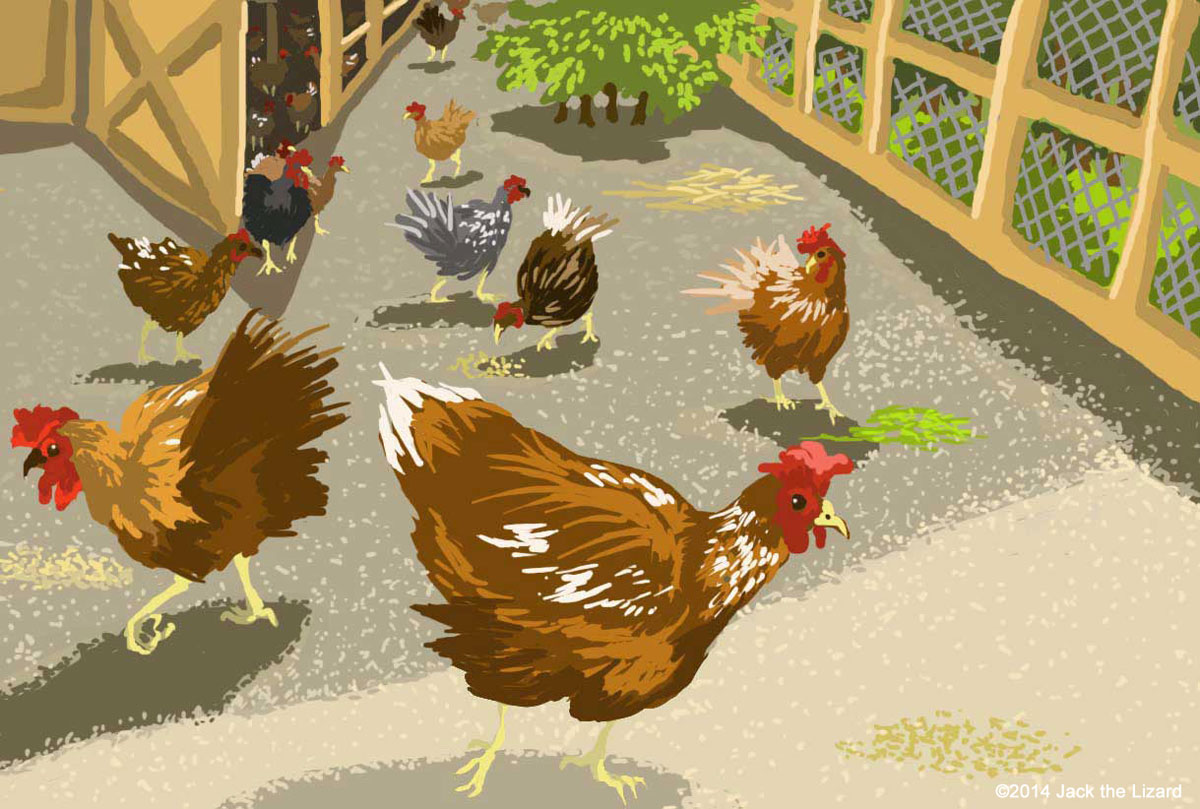
|
|
|
|

|
|
The origin of domesticated chickens might derive from The Indus Valley in Pakistan. From there domesticated chickens had probably spread over Europe and Asia. Since then they have been with us for about 5000 years. Humans have been eating meats and eggs of domesticated chickens for years. Selective breeding have been proceeded for generations both chickens for meat production and for egg. Chickens for eggs are called egg-laying hens. They lay eggs almost every day and some breeds can lay about 300 eggs a year. After 400 days they are exhausted and lay fewer eggs, and then they are sent to the meat processing factory to become sausages or pet food. Largely there are two ways of rearing egg-laying hens, one is keeping chickens in cages and another is raising in large barn or outside. The former is called battery farmed eggs and the latter is called free run eggs. In battery farm chickens stay in small cages throughout their life without enough excises they need. Consequently chickens are susceptible to diseases in this stressful environment. Therefore antibiotics are necessary for chickens to resist disastrous diseases such as bird flu. However those antibiotics accumulate in chickens’ meat and it is possible that consumers take those with meat. Battery farm has still some advantages though. Farmers need few workers to control feed and collect eggs. Also eggs produced in battery farms are much cheaper than free run eggs. On the other hand chickens in large barns or outside have much freedom. They can enjoy their natural behavior such as bathing in sand and playing each other. Therefore few medications are necessary, but egg collection is harder than battery cages. Naturally free run eggs are much expensive and not unified size. European Union banned the battery cages in 2012 and some famers in U.S. also follow this trend. It is obvious that chickens have happier life in large barn than battery cages. However final decision is always on consumers’ hand. |